by GaryG
My trip to Geneva in November 2018 (chronicled in these pages at You Are There: 2018 November Geneva Watch Auctions And Grand Prix d’Horlogerie De Genève) was certainly a whirlwind as it combined my first service on the GPHG jury with the delivery of two new pieces, my Patek Philippe Reference 3940P and Grönefeld 1941 Remontoire, and our small traveling band’s now-traditional attendance at the autumn auctions.
Oh, those auctions! While my intention is usually to browse the rare pieces on offer, gain an education from my auction-house friends and escape unscathed, it seems that more often than not there is a piece that puts me into bidding mode. And sometimes, that piece is entirely unanticipated as in the case of the Vacheron & Constantin Reference 4560 triple calendar I stumbled across at the Sotheby’s preview.
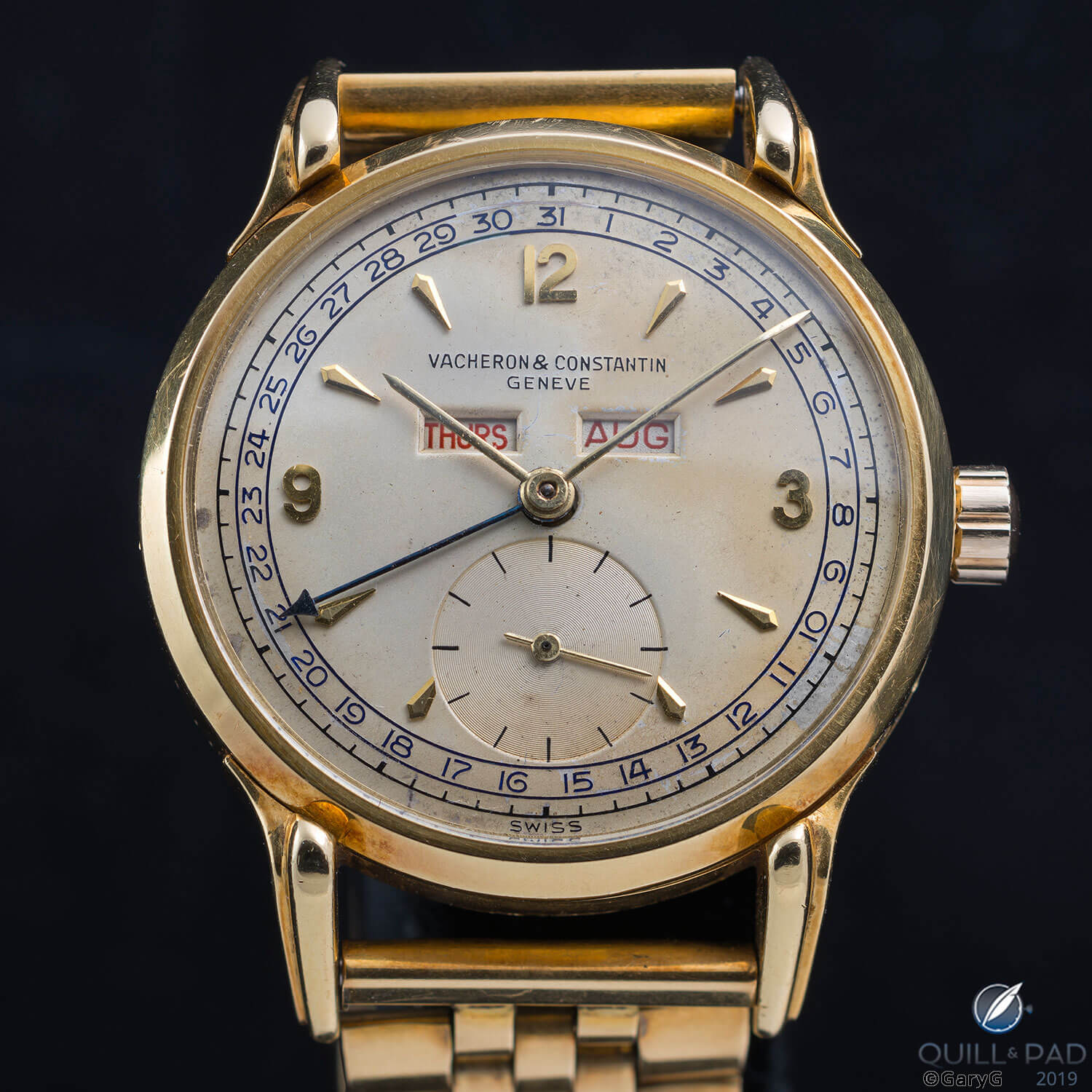
Unexpected and irresistible: Vacheron & Constantin Reference 4560 triple calendar
Why I bought the Vacheron & Constantin Reference 4560 triple calendar and how it fits in
The story of this one is a bit complicated! In late 2017, I was smitten when I saw images of a newly-issued watch from Vacheron Constantin: the Historiques Triple Calendrier 1942. I even went so far as to place a deposit on a future delivery of the steel version of that watch based on photos alone.
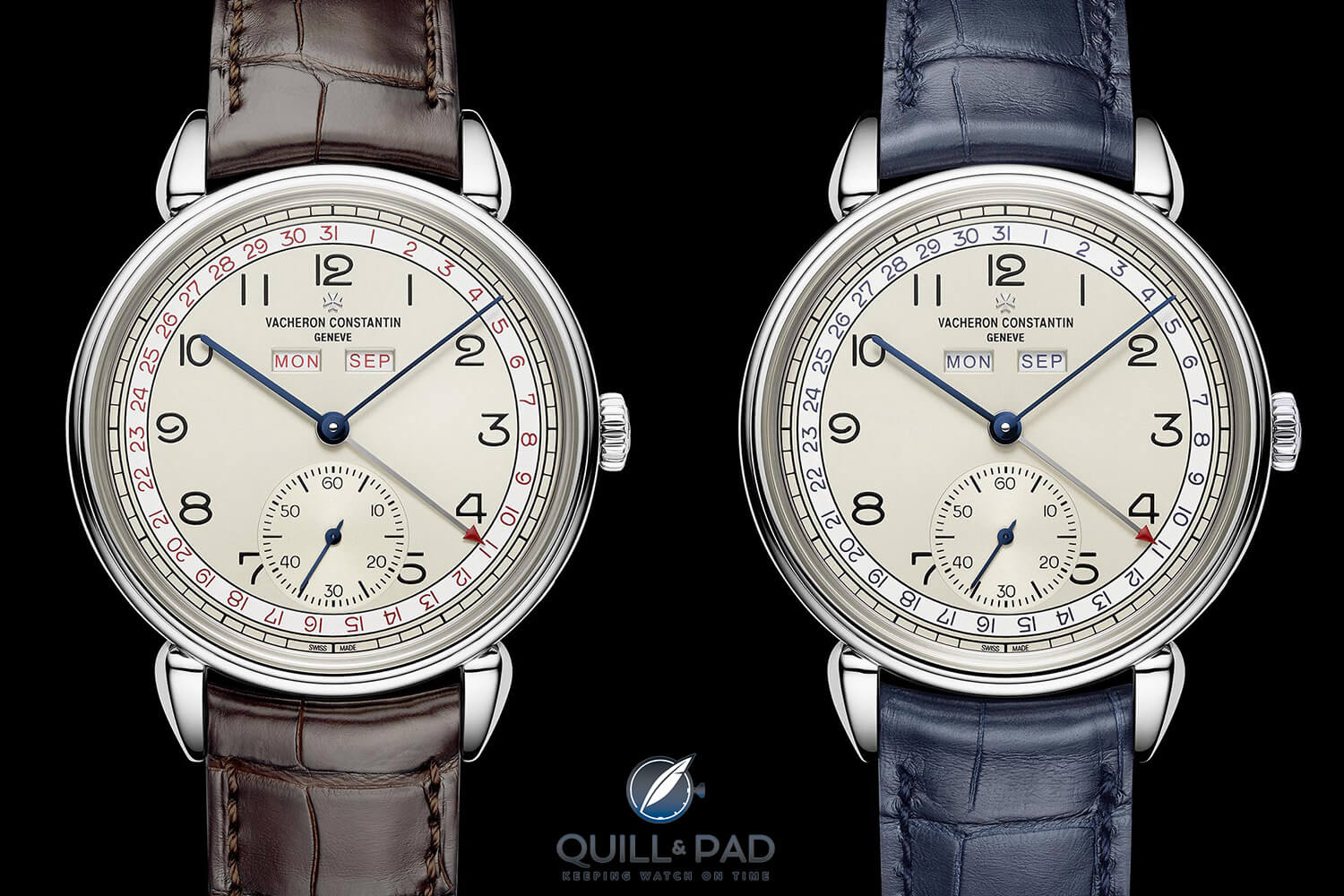
Vacheron Constantin Historiques Triple Calendrier 1942 in steel
When I did handle the watch, I found that the proportions of its 40 mm diameter case were not 100 percent for me, and so I passed on the piece. However, I wouldn’t soon forget its striking vintage-based looks and I began to pay greater attention to examples of older Vacheron Constantin triple calendars as they came onto the market.
Fast-forward to Geneva in November 2018, where I saw, loved, bid on, but did not win a pristine Vacheron Constantin triple calendar that sold at Phillips to a very good home.
But as I sat at Sotheby’s preview the following day flipping through the catalog, there it was: a less pristine but charming triple calendar that looked even better on my wrist than in the photo, and whose fitted bracelet seemed to have been sized just for me. It made a couple of additional trips from the display case back and forth to me over the next hour before I finally tore myself away.
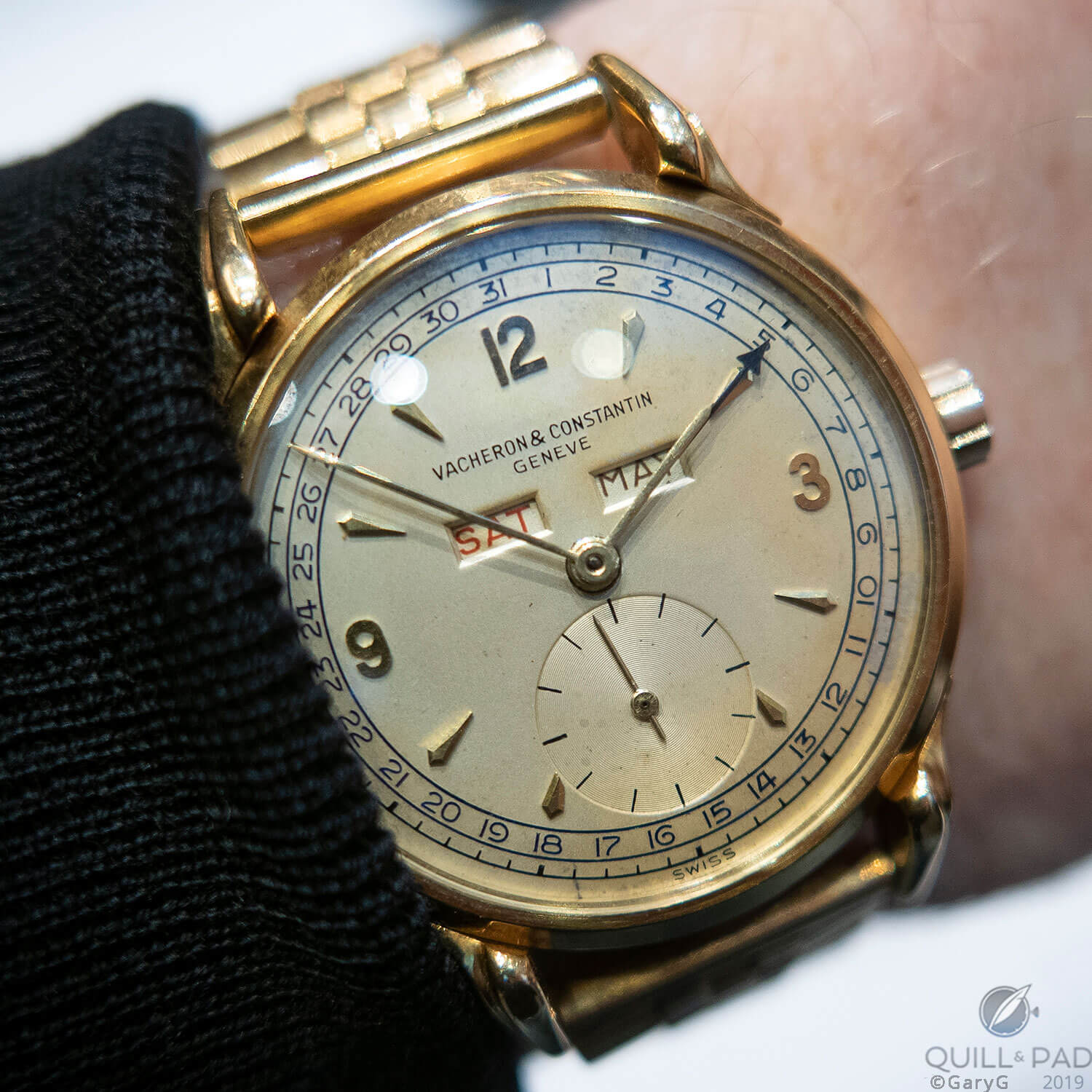
You are there: Vacheron Constantin Reference 4560 on the author’s wrist at Sotheby’s, Geneva
I was heading home before the auction itself, but the Sotheby’s team executed a successful absentee bid on my behalf and the watch was mine, although on a different continent and needing some (fully disclosed prior to sale) tweaks to the keyless works. Those repairs were completed in time for January 2019’s trip to Geneva for SIHH week, and it was great to have it back on my wrist.
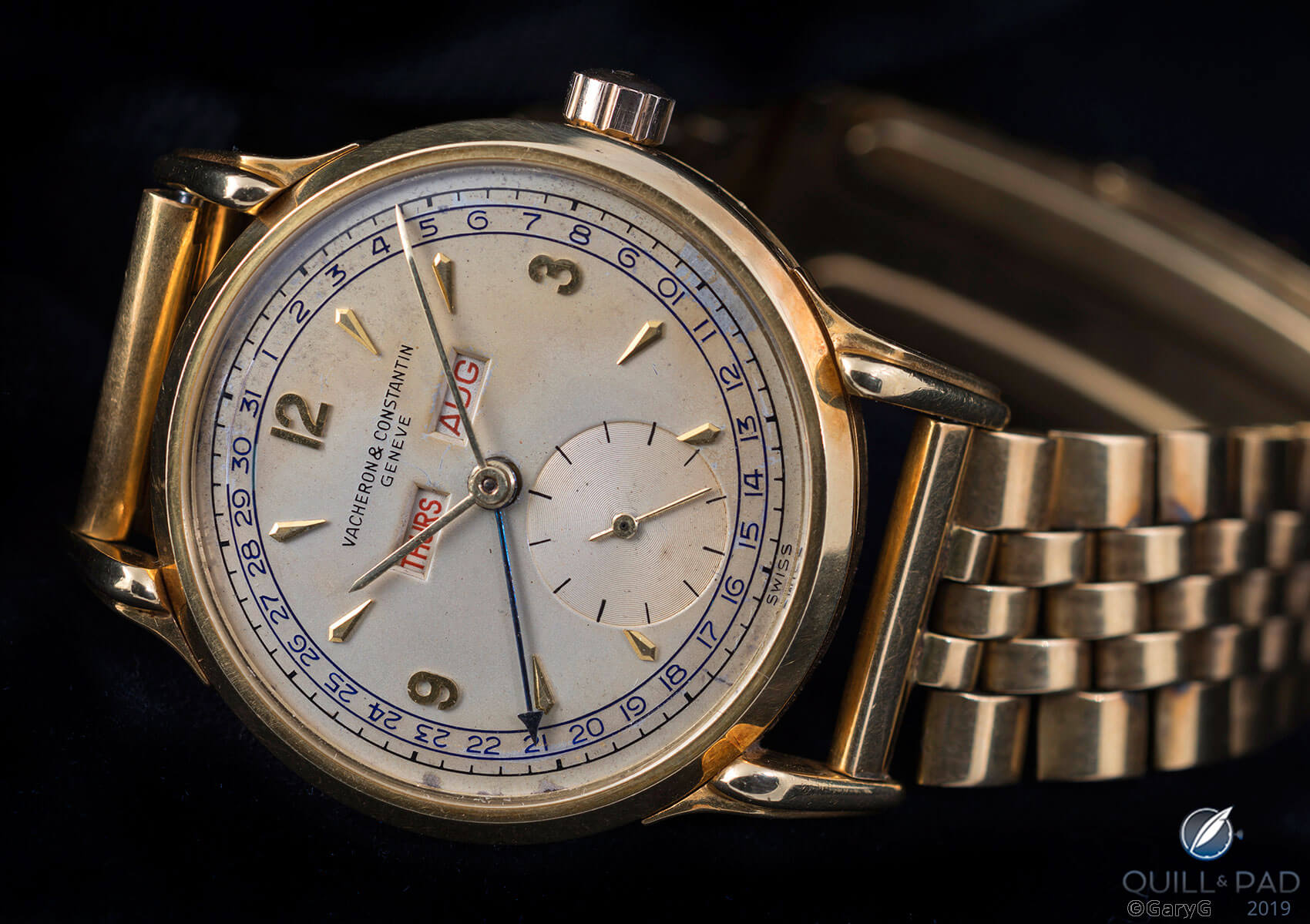
Worth the wait: Vacheron & Constantin vintage triple calendar
I’m inclined to classify this piece as a “fun” watch under my pal Terry’s portfolio model, but there is a significant “foundational” aspect to it as well, as I’d argue that the triple calendar is such a classic complication for Vacheron Constantin that it’s one of the items that someone building a well-constructed collection should consider.
If I don’t obsess about it too much, though, I’ll slot this one into the fun category for one important reason: with vintage watches, I’m in many ways taken back to my early days in the watch hobby when I was simply buying watches I liked. It is possible to overthink this stuff!
And when it came to this particular piece, while there was a logic trail that led to its purchase it was mostly the joy of discovery that tipped the scales for me.
Why I love the Vacheron & Constantin Reference 4560 triple calendar
We’ve seen a lot of images of the dial side so far, so let’s start this section with the movement!
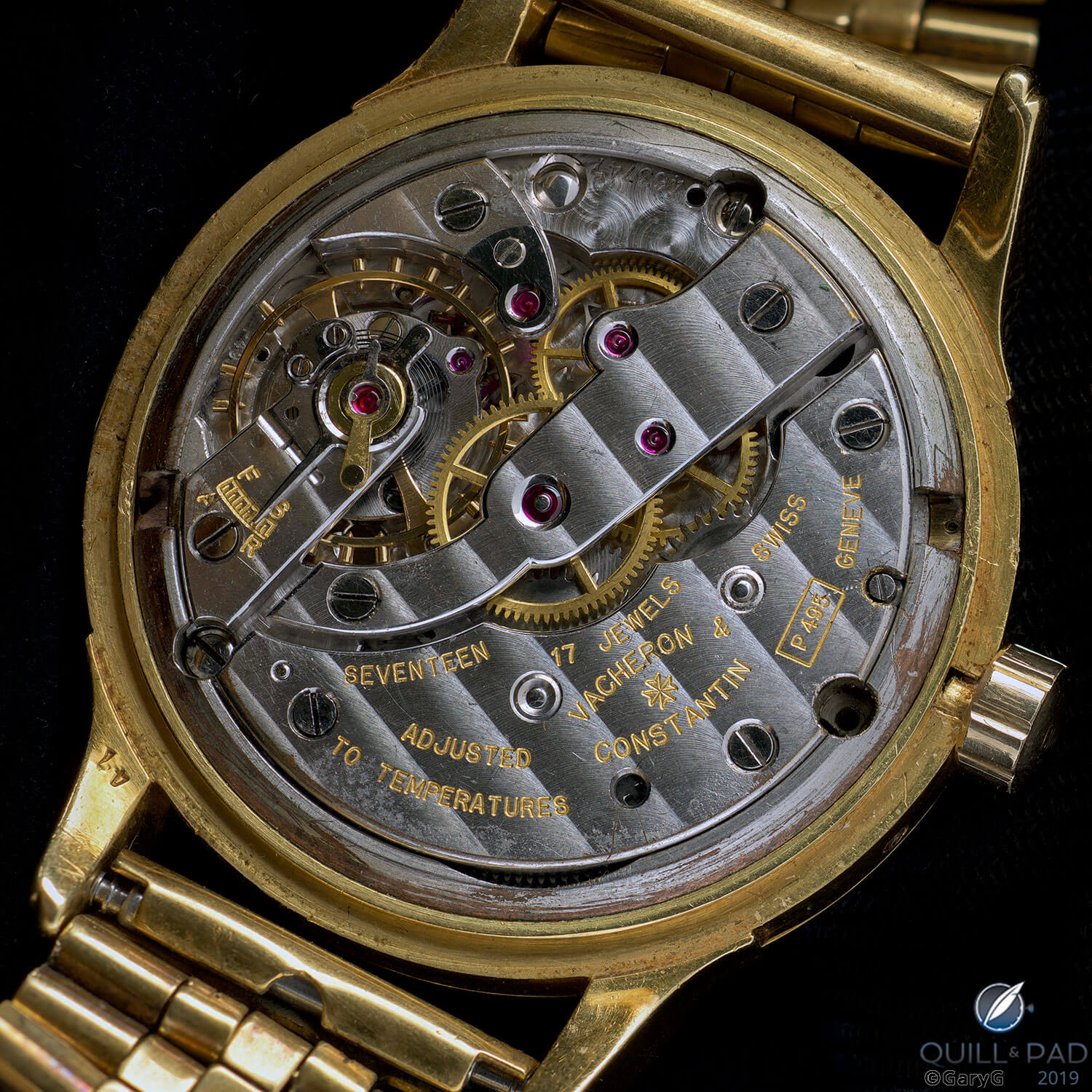
Caliber P495, Vacheron & Constantin Reference 4560 triple calendar
Caliber P495 (with the “P” designating a movement with pare-choc shock-absorbing components fitted to the balance) was a development of Vacheron Constantin’s 453 family of movements first launched in the 1940s.
The architecture is pure Vallée de Joux, with that long bridge reaching across the center of the movement: a particularly striking element in my view. And this movement has a lot of other features to recommend it, including those internal angles, clean bevels, polished jewel sinks and escape bridge cap, and distinct Geneva waves.
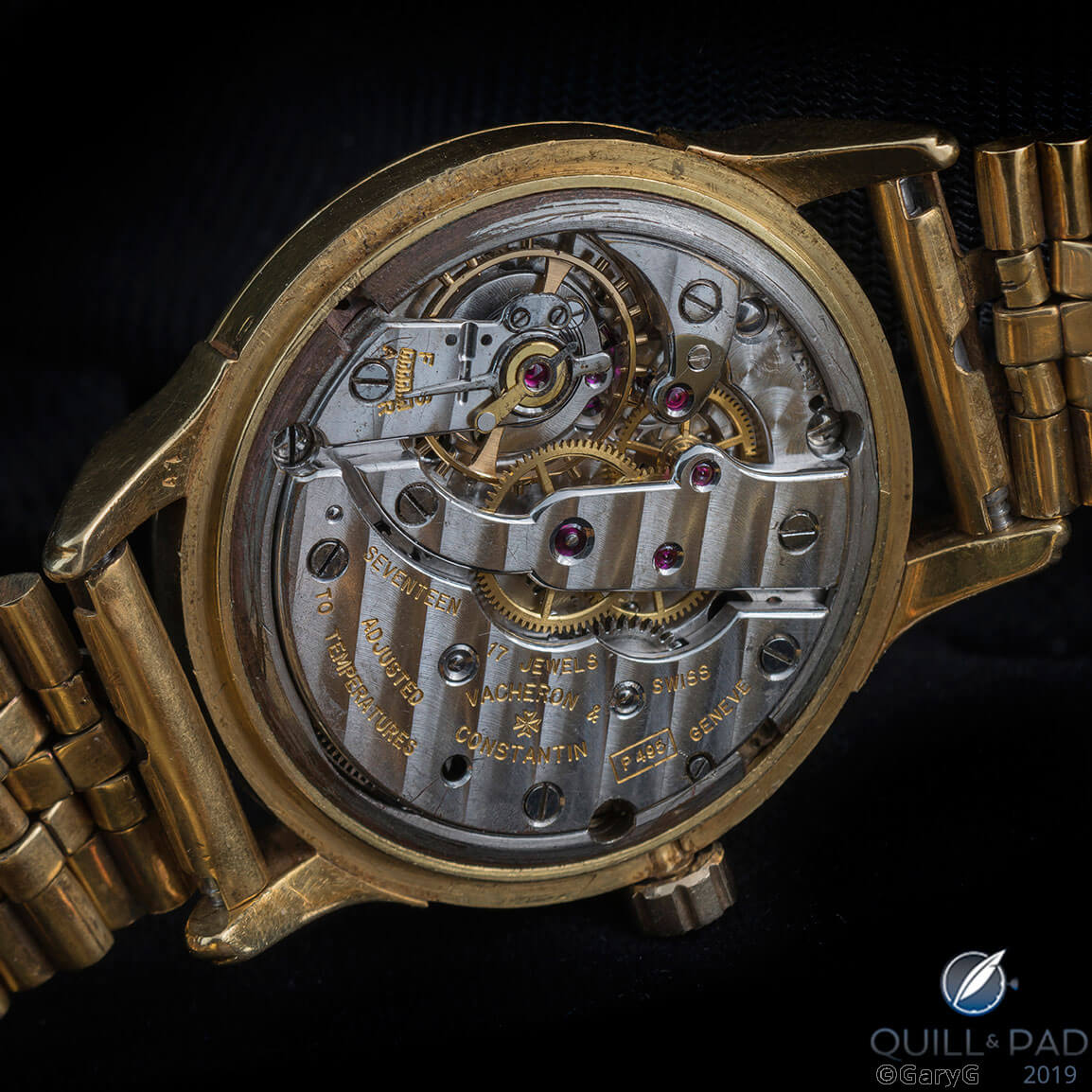
Do you see it? Fewer parts than once there were
One lovely feature of the Caliber 453 movement family that sadly has gone missing on my watch is the graceful swan-neck regulator for the balance; the good news for me is that I know a watchmaker who has a matching movement he is parting out and (fingers crossed) I’ll be able to remedy that problem in due time.
Despite that omission, the Caliber P495 in my watch seems quite robust: after the update to its keyless works, the time setting is flawless; the pushers that set the date and month click crisply and easily as they advance the indications; winding feel is quite satisfying; and timekeeping is easily within my “minute per week on the wrist” practical standard.
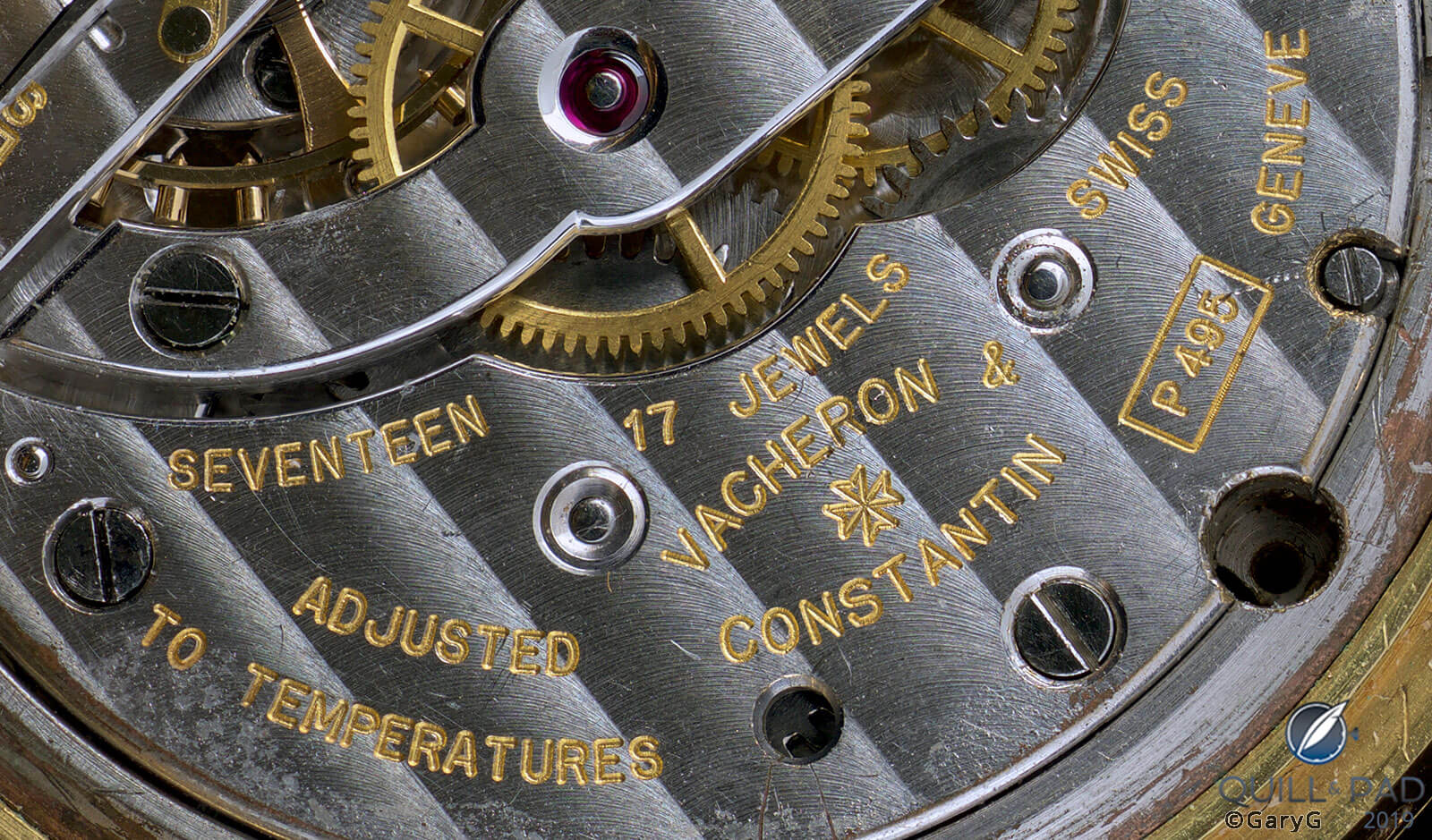
Movement detail, Vacheron & Constantin Reference 4560
There’s another aspect of this movement architecture of which I’d been unaware until doing my research for this article, and that’s a potential linkage to Philippe Dufour and his Simplicity. In a 2010 PuristS post on the Caliber 453 movement and its derivatives, Vacheron Constantin expert Bill Lind states that Dufour based the gear train design of the Simplicity on the Jaeger-LeCoultre ébauche behind the Caliber 453.
I was sufficiently taken aback by this to do a quick superimposition of one of Lind’s 453 photos over an old Simplicity movement photo of mine, and while the angles of the shots are a little different, it seems that he may be on to something based on the positions of the horseshoe-shaped array of pinions and jewels at the left of the two movements.
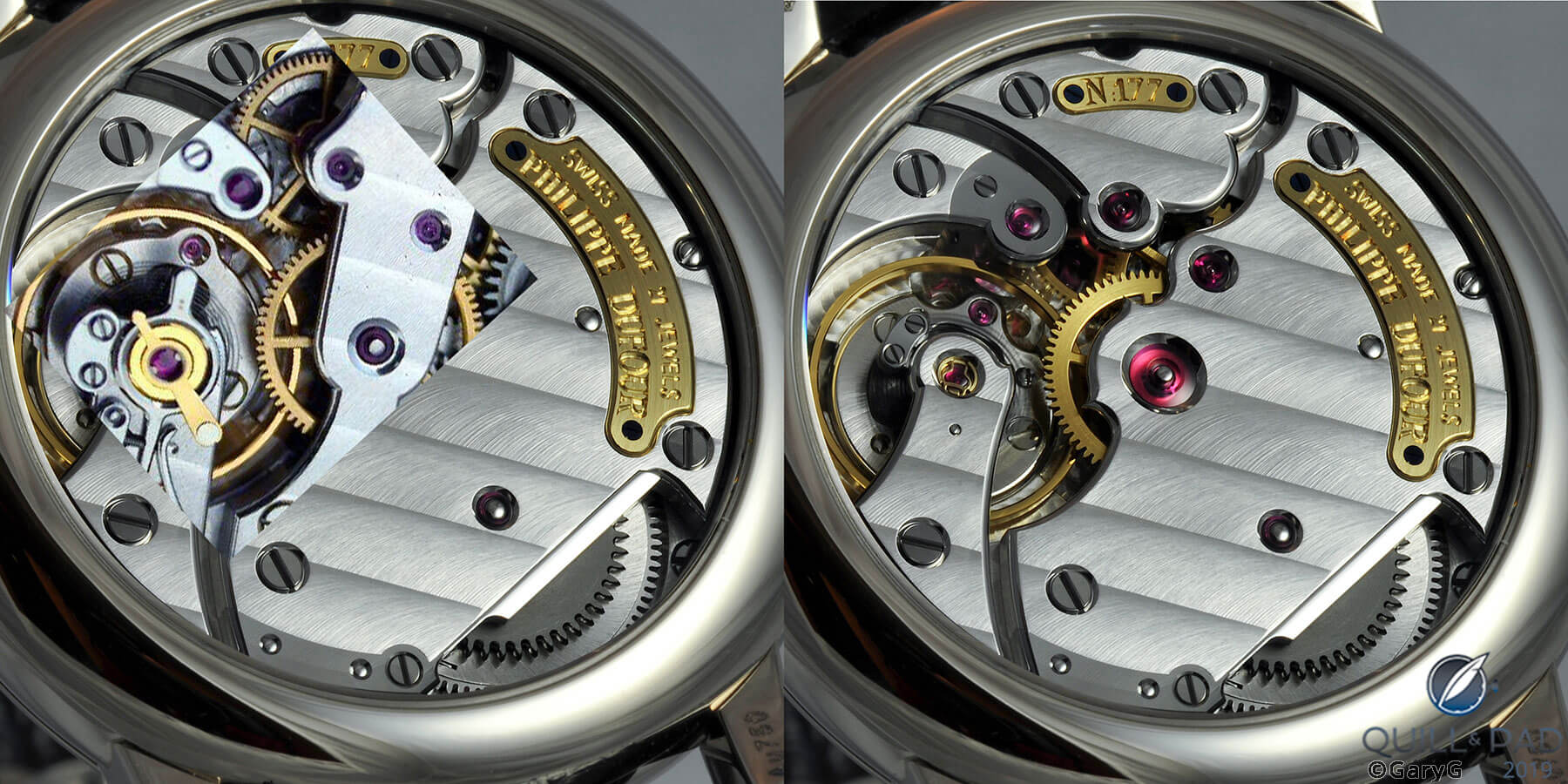
Architectural inspiration? Vacheron Constantin Caliber 453 pinion positions atop the Philippe Dufour Simplicity
Back to the front: a good part of the charm of this watch for me is in the dial. Seen at actual size on the wrist, the appearance is of a relatively uniform light gold patina. The macro lens is a harsh mistress, though, and as you can see in the photo below, this dial has picked up several scars over the years.
I take consolation in the fact that the watch is older than I am, and while I’m not sure which one of us has aged more gracefully we’ve both clearly had our share of knocks over the years.
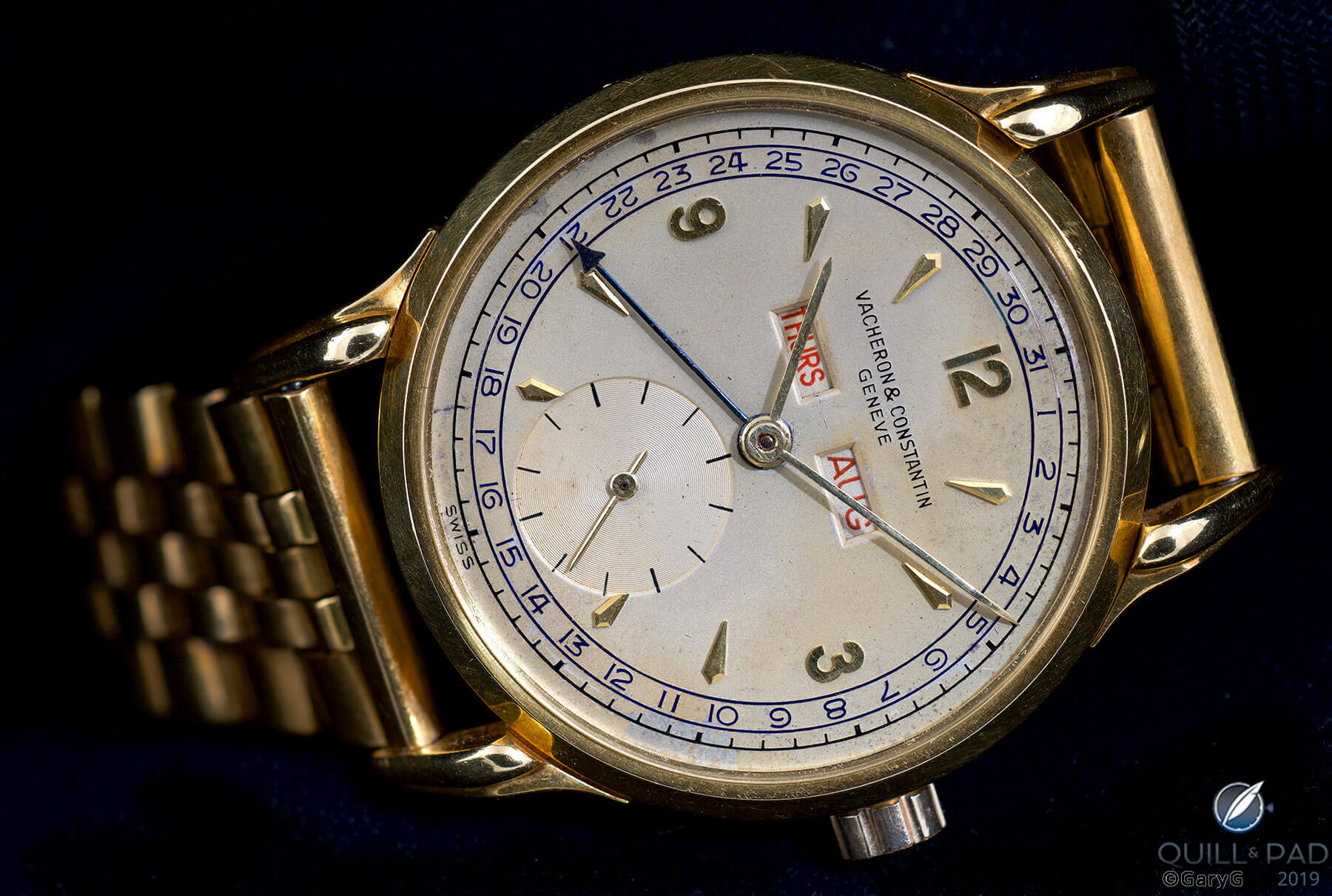
Aging, perhaps gracefully: dial of the Vacheron & Constantin Reference 4560
I’m also a big fan of the applied indices on this particular dial. Vacheron Constantin made these triple calendars with a variety of marker styles, and the combination of applied Arabic numerals at 3, 9, and 12 with dagger-shaped indices at the other hours seems just right to me.
The case shape is also very much to my liking, with those pronounced claw lugs providing real visual interest. And perhaps surprisingly, the case seems in cleaner condition than the dial: check out the crisp lug contours and the very distinct hallmark visible near 10 o’clock on the case band as seen below.
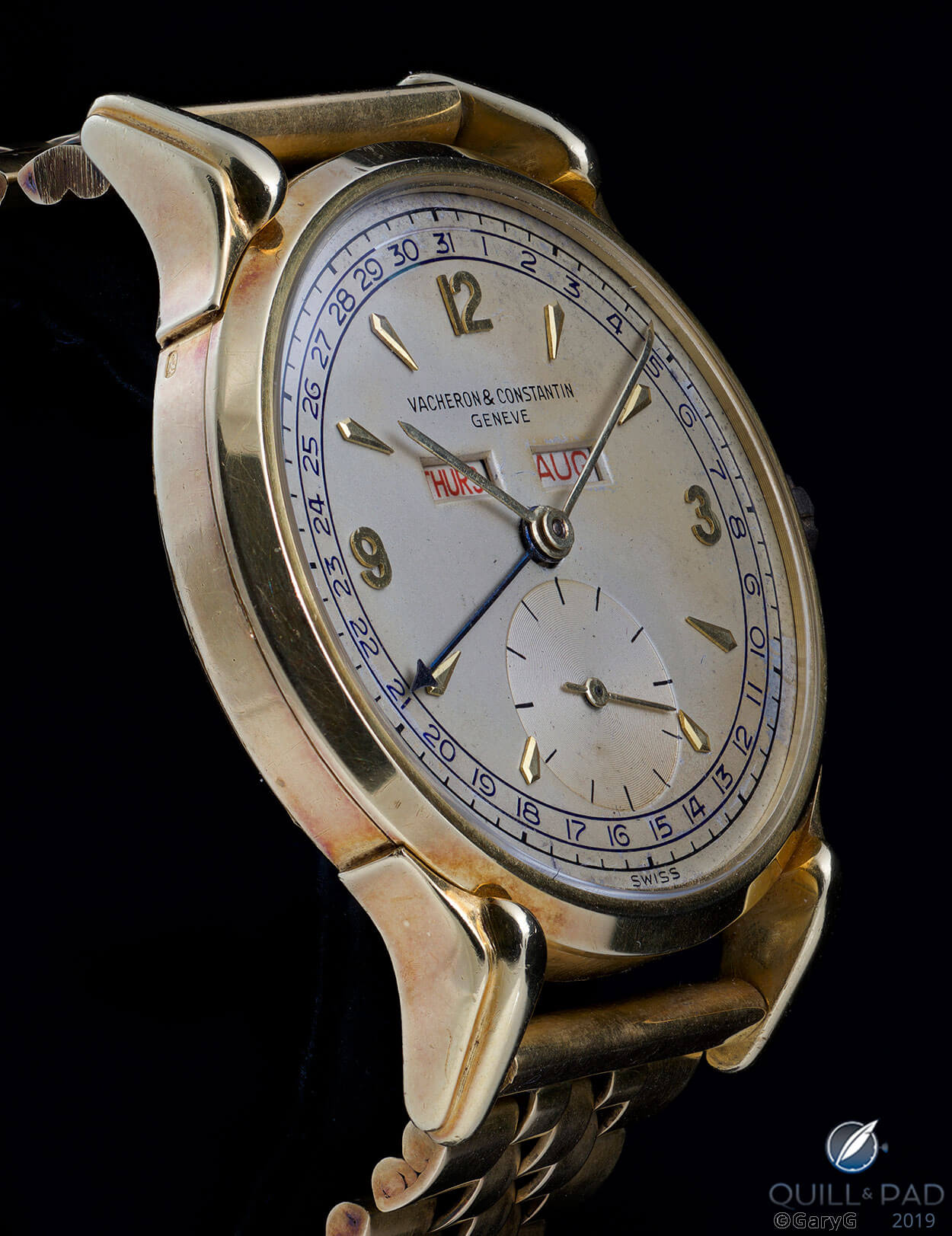
Case detail, Reference 4560
The case is just as sharp as seen from the other side, but that crown is certainly not original to the watch. One more replacement item for me to see if I can source somewhere!
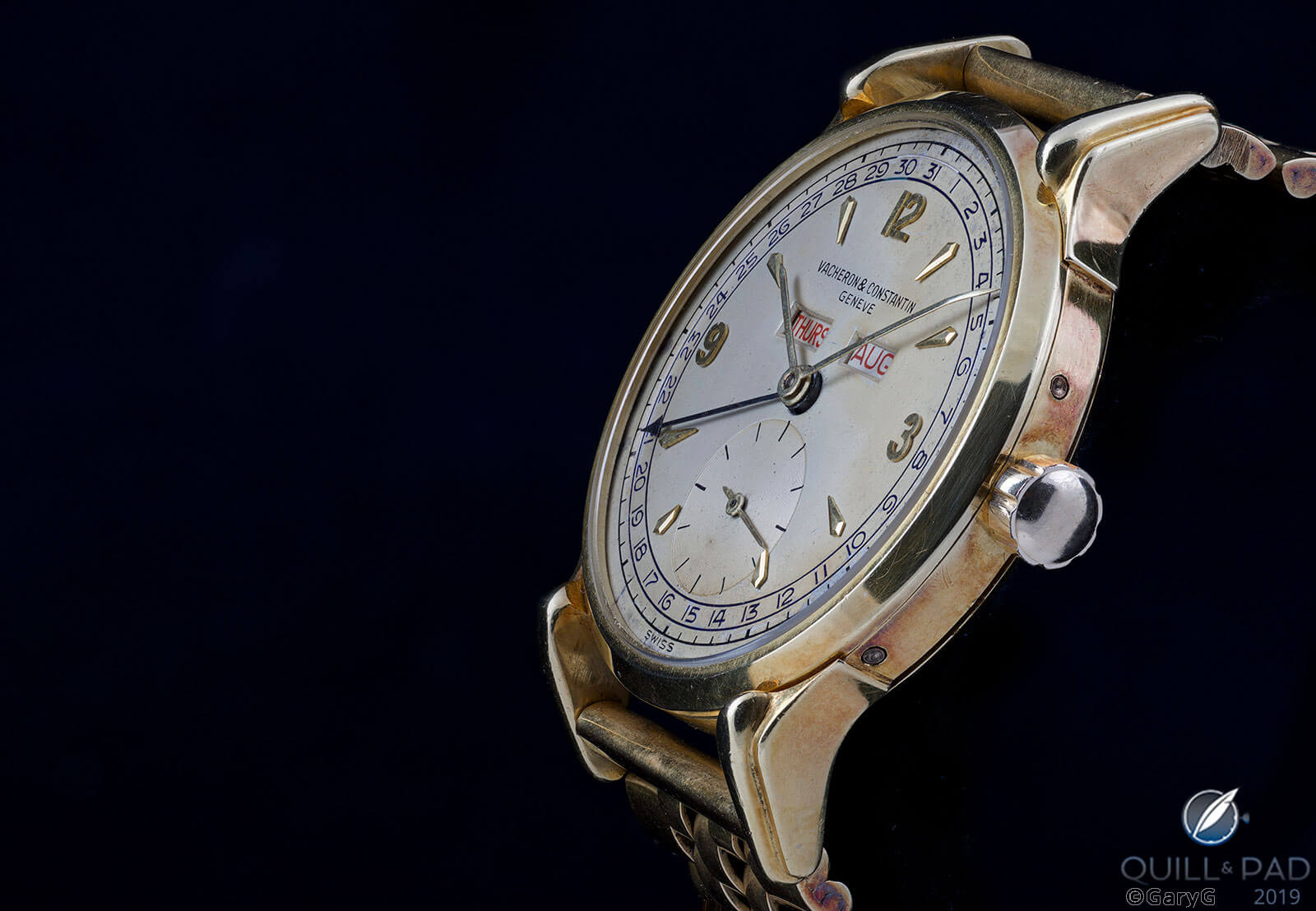
Case profile, Vacheron & Constantin Reference 4560 with replacement crown
When I popped off the case back to take the movement photos, I was pleased to see the nice perlage on the interior surface. And I was also interested to see that the case – as indicated by the Geneva Key 4 maker’s stamp – was produced by noted case making firm Antoine Gerlach, which was also responsible for the Patek Philippe 3448 case, among others.
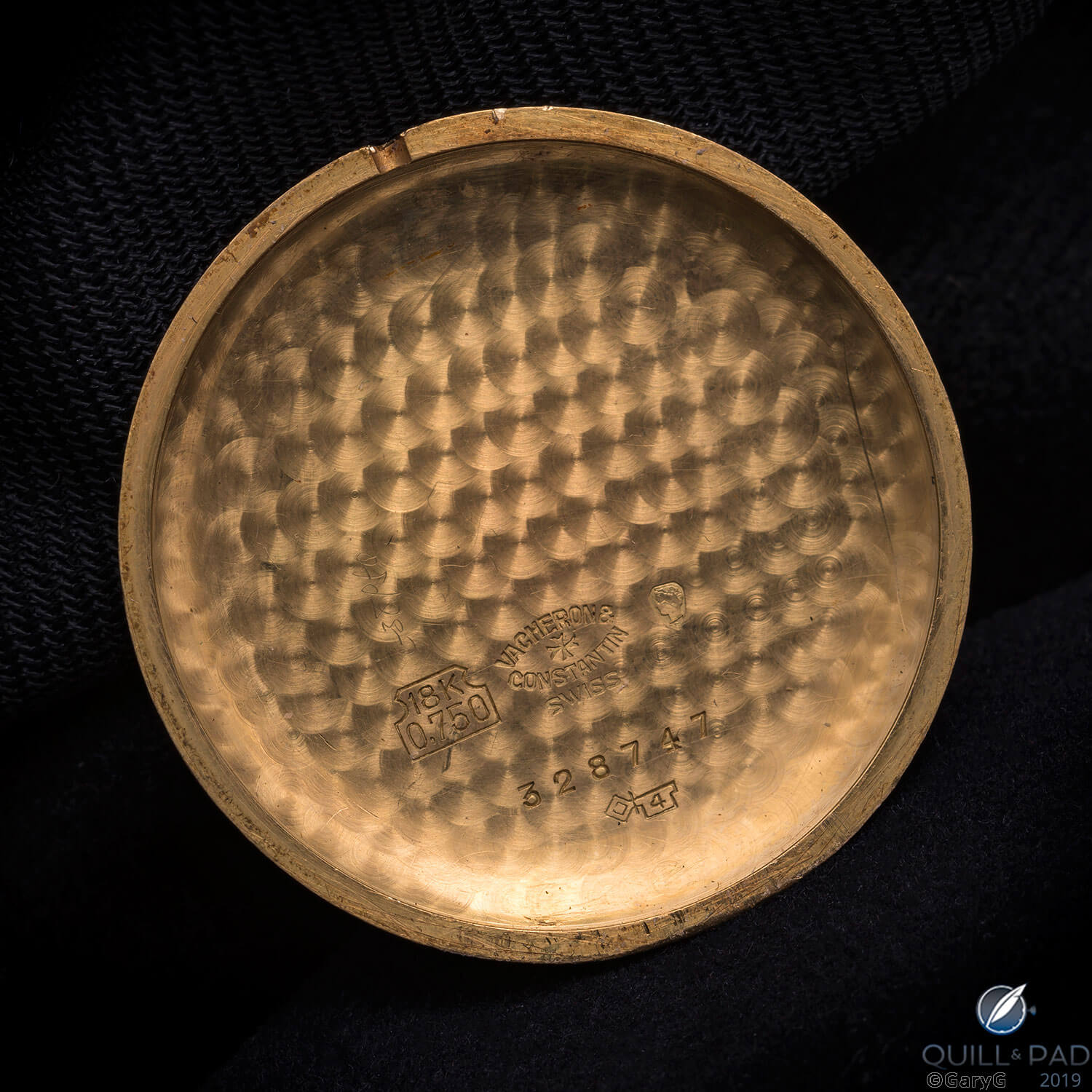
Reference 4560 case back with Antoine Gerlach maker’s stamp
The bracelet, while not signed by Vacheron Constantin, is certainly period correct and looks as if it may well have accompanied the watch through its lifetime. I’m not a huge fan of the wobbly feel of most vintage bracelets, but despite the fact that the links of this one have a decent amount of play, once on the wrist there’s no issue.
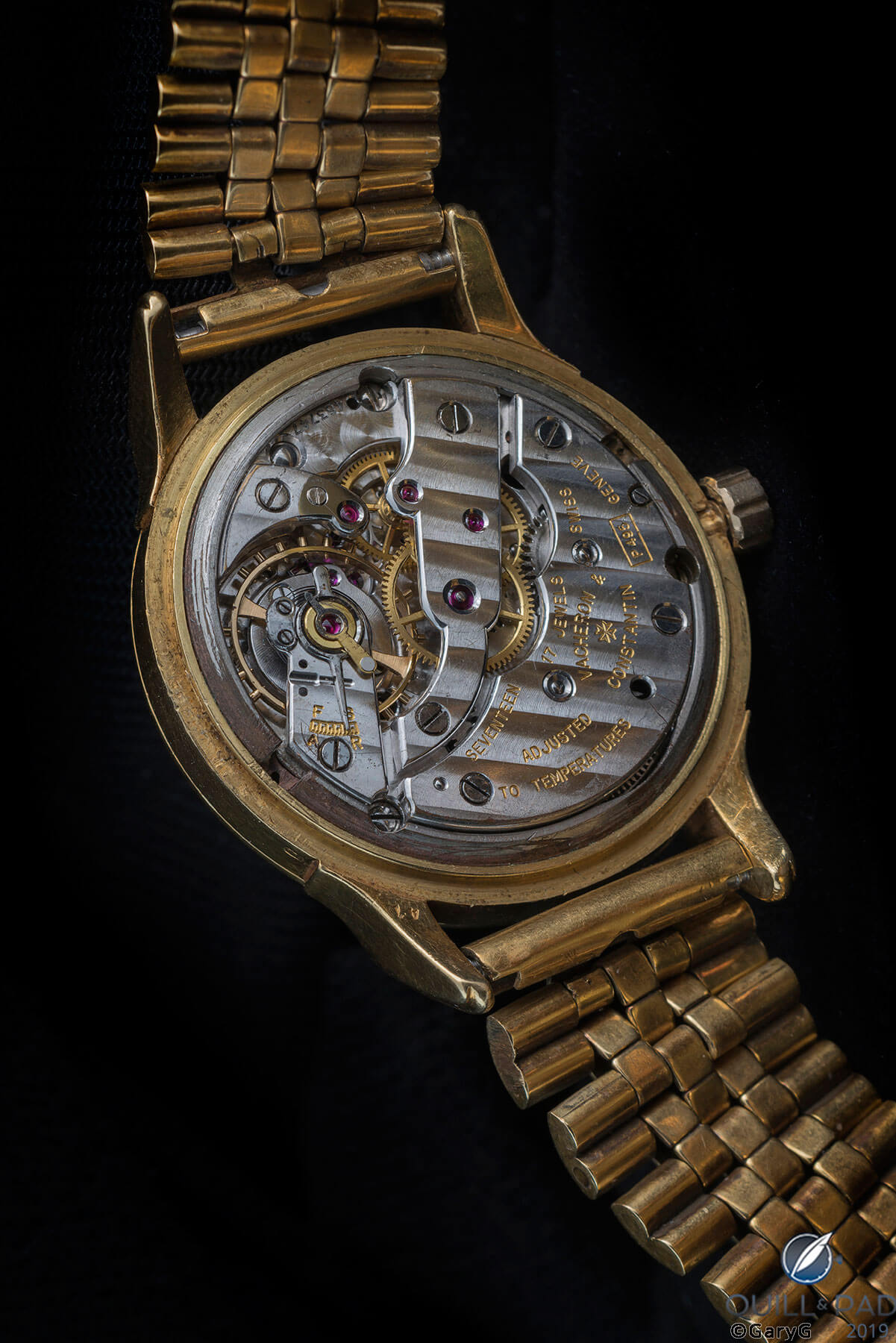
Vintage feel: rear view of Reference 4560 and its associated bracelet
Any quibbles?
I’ve already mentioned a few things along the way, but there is one additional thing that does gnaw at me a bit.
If you take a careful look at the wristshot near the top of the article or at the image in Sotheby’s auction listing you’ll see that the black enamel line that extends across the top of the date numerals between 29 and 1 is very much in place. When yesterday I reviewed the photos I took following receipt of the watch back from Sotheby’s recommended watchmaker, I noticed that a pretty decent chunk of that line is now gone, revealing the engraved channel below for the champlevé.
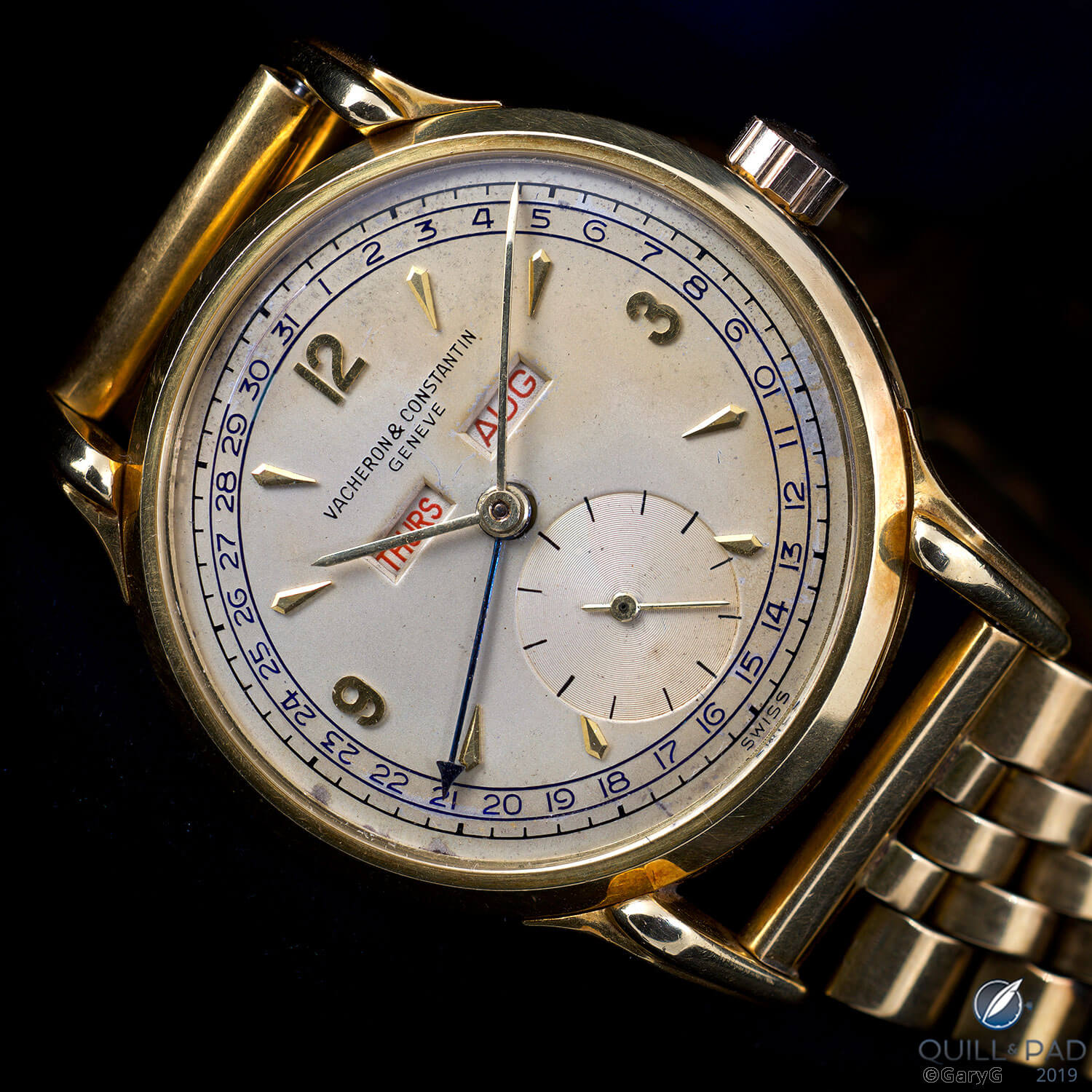
Missing link: look above the numbers 30 and 31
There’s obviously nothing to be done about it now, and I’m not sure what happened while the watch was in the watchmaker’s care, but I do wish he had been more forthcoming about this damage. One more reason to be very, very specific that the dial and hands of vintage pieces are not to be touched during service!
Is it right for you?
Since January, I’ve found myself taking the 4560 out of the safe quite regularly, and I’m really enjoying the classic vibe; it’s a watch that I can easily imagine I’d have bought new for myself in 1952 had I been around then and fortunate enough to have the funds.
It wears so well and has such wrist presence that I’ve had to measure it several times to convince myself that the stated diameter of 35.5 mm is correct; between the open dial and thin bezel, aggressive lugs, and muted bling bracelet this is definitely one that wears bigger than the yardstick would suggest.
But is a watch like this a good choice for you? You might consider a search of your own for something like the Reference 4560 if:
- You are developing a taste for vintage watches and are looking for a wearable watch that has the class of those from the other “big” vintage brands but doesn’t break the bank.
- You like the idea of owning a vintage watch that is central to its brand’s history, in the way that the triple calendar is to Vacheron Constantin.
- You don’t need a watch that is in perfect condition to feel good about owning it.
- You like that ampersand between “Vacheron” and “Constantin.”
On the other hand, you might pass on this kind of piece and go for something like Vacheron Constantin’s new Triple Calendrier 1942 if:
- You favor the larger size of a contemporary watch.
- You like the idea of owning a piece with vintage design cues that has all of the advantages of a brand-new watch.
I’ll look forward to your own thoughts and experiences with vintage pieces in the comments below. Happy hunting!
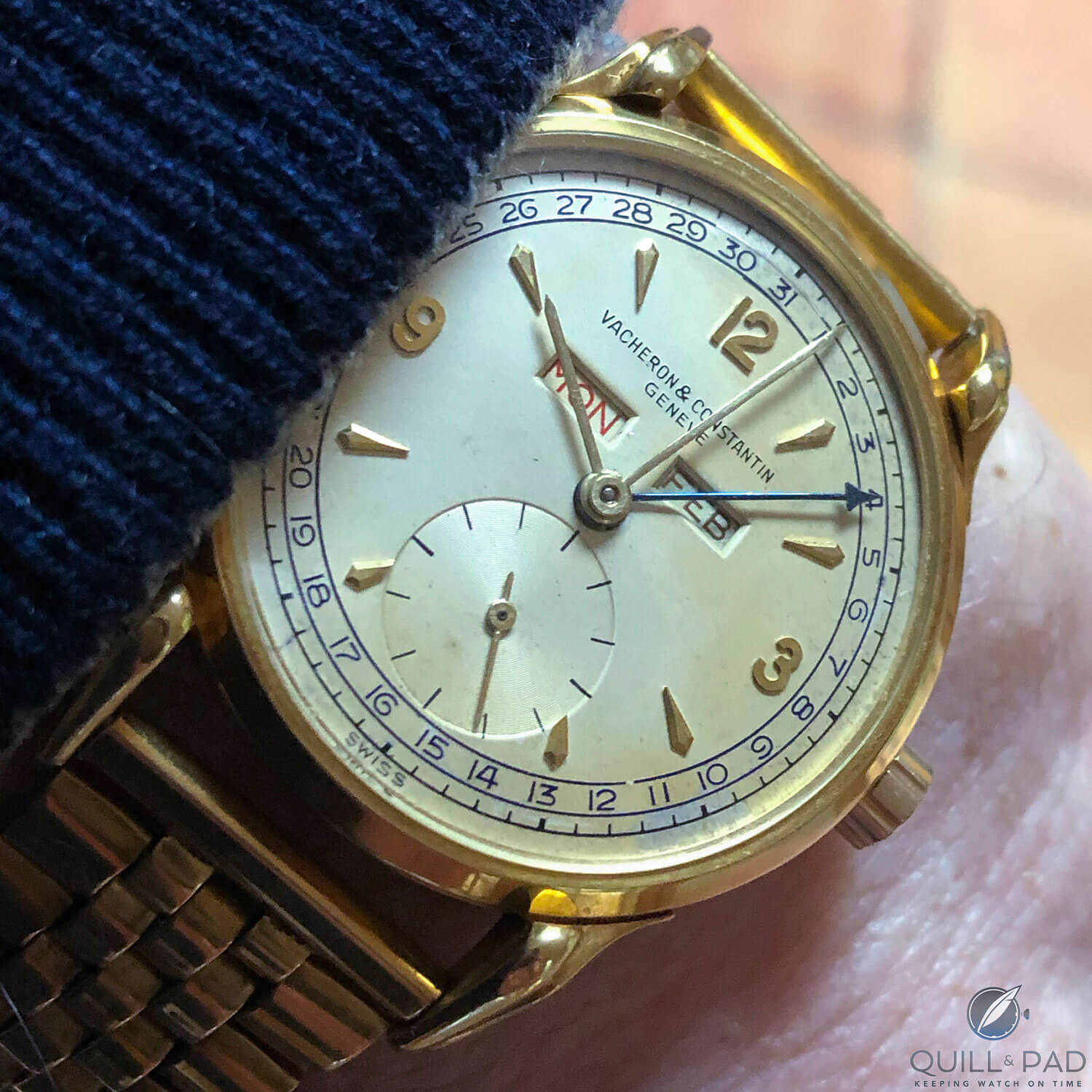
Parting shot: Vacheron & Constantin Reference 4560 on the wrist
Quick Facts Vacheron & Constantin Reference 4560 triple calendar
Case and bracelet: 35.5 mm, yellow gold with snap-on back and claw lugs; associated 18k yellow gold bracelet with folding clasp
Dial and hands: silvered dial with applied gold indices and champlevé enamel markings; gold and blued steel hands
Movement: manually wound Caliber P495, based on Jaeger-LeCoultre ébauche, 18,000 vph/2.5 Hz frequency
Functions: hours, minutes, subsidiary seconds; complete calendar with sweep date, day of week, and month
Price: CHF 18,750 at Sotheby’s Geneva auction, November 2018
Production year: movement produced ca. 1943 (based on serial number); estimated date of retail sale (per Sotheby’s) 1952
Quick Facts Vacheron Constantin Historiques Triple Calendrier 1942
Case: 40 x 10.35 mm, stainless steel with sapphire crystal case back
Dial and hands: printed metal dial and steel hands
Movement: manually wound Caliber 4400 QC, 65-hour power reserve; 28,800 vph/4 Hz frequency; Geneva Seal hallmark
Functions: hours, minutes, subsidiary seconds; complete calendar with sweep date, day of week, and month
Price: $19,100
Production years: 2017 onward
* This article was first published on April 8, 2019 at Why I Bought It: Vacheron & Constantin Reference 4560 Triple Calendar.
You may also enjoy:
Vacheron Constantin Métiers d’Art Elegance Sartoriale Collection: I See A Pattern Here
You Are There: 2018 November Geneva Watch Auctions And Grand Prix d’Horlogerie De Genève
Why I Bought It: Patek Philippe Reference 3940P-027 Vintage Collection
Why I Bought It: Grönefeld 1941 Remontoire





















































Leave a Reply
Want to join the discussion?Feel free to contribute!